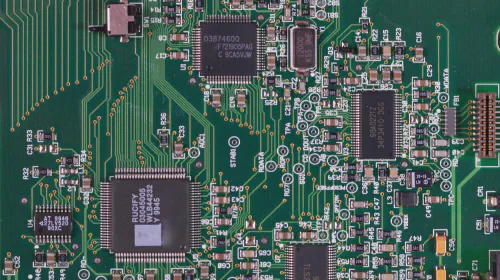Does Solana Solve the Blockchain Trilemma?
Salomon Kisters
Nov 24, 2022This post may contain affiliate links. If you use these links to buy something we may earn a commission. Thanks!
Blockchain technology has the potential to revolutionize the world as we know it. However, there is one inherent challenge that must be addressed for blockchain technology to reach its full potential.
Solana is a blockchain platform that seeks to solve the blockchain trilemma – ensuring scalability, security, and decentralization. In this blog post, we’ll explore how Solana seeks to achieve decentralization and security even as it scales.
Does Solana offer a workable solution?
What is the Blockchain Trilemma and Why is it a Problem for Leading Blockchains?
The blockchain trilemma is a problem that all leading blockchains face. It refers to the impossibility of achieving all three objectives of scalability, security, and decentralization at the same time. While each blockchain may place a different emphasis on one or more of these factors, all are equally important in ensuring the success of the network.
Scalability refers to a blockchain’s ability to handle the increasing number of transactions as its user base grows. Bitcoin, for example, can currently handle around 7 transactions per second. Ethereum can handle 15.
Compare this to Visa, which can handle over 24,000 transactions per second. As you can see, there’s a big difference in the speed of processing transactions between these technologies.
Security, on the other hand, refers to a blockchain’s ability to resist attacks from bad actors. Bitcoin, for example, has been incredibly secure so far. Ethereum has also been quite secure, but it has suffered from some high-profile hacks in the past.
The final aspect of the trilemma is decentralization, which relates to how a blockchain distributes power among its users. Bitcoin is the most decentralized blockchain, whereas Ethereum has a somewhat less decentralized structure. In comparison to established financial institutions, both are decentralized public ledgers that enable unparalleled levels of individual control over one’s own digital assets and data.
The blockchain trilemma is becoming a challenge that practically every blockchain is unable to address. For example, increasing scalability usually comes at the expense of decentralization. This is because more centralized blockchains are able to process transactions more quickly than decentralized ones.
How Does Solana Operate and How Does it Solve the Blockchain Trilemma?
Solana operates by using a Proof-of-Stake (PoS) consensus algorithm, which is different from the Proof-of-Work (PoW) consensus algorithm used by Bitcoin and Ethereum. With PoS, transaction fees are not paid to miners, but instead to validators who stake their tokens on the network.
This means that there is no need for energy-intensive mining operations, which makes Solana more environmentally friendly than other blockchains for the most part.
PoS also enables Solana to process up to 65,000 transactions per second, which is orders of magnitude more than what other blockchains can handle at this point. This scalability is made possible by the fact that each node on the network only needs to process a small number of transactions at a time, instead of all of them at once.
In addition to its fast transaction processing capabilities, Solana is also designed to be secure and decentralized. The PoS consensus algorithm helps to keep the network secure, as validators have a financial stake in the network and will, therefore, not want to jeopardize it. And because Solana does not rely on mining operations, it is less susceptible to centralization than other blockchains.
How Could Solana’s Solution Benefit Businesses and Investors?
There are many potential benefits that businesses and investors could reap from Solana’s solution to the blockchain trilemma. For businesses, the fact that Solana can process transactions much faster than other blockchains could make it a more attractive option for payments and other applications that require quick transaction processing. And because Solana is less centralized than other blockchains, it could be a more secure option for businesses to build on.
For investors, Solana’s fast transaction processing speeds could lead to increased demand for its tokens, which will help drive up the price. And as more businesses build on Solana, the network could become more valuable, which would also benefit investors in the end.
So, Does Solana Really Solve the Blockchain Trilemma?
From what we can see, Solana has made some significant progress in solving the blockchain trilemma. They have created a scalable, secure, and decentralized blockchain that has the potential to revolutionize the way businesses use blockchain technology. If it can continue to build on its success, Solana could become the go-to solution for businesses that need a practical and scalable blockchain solution.
The Future of Solana and How it Will Shape Blockchain Technology
As Solana continues to grow and evolve, it will likely have a major impact on the future of blockchain technology. As businesses begin to see the benefits of using Solana for their blockchain needs, we can expect a shift away from traditional blockchains such as Bitcoin and Ethereum. This would allow for even more innovation and growth in the blockchain space. Solana is more conducive to continuous improvements than existing blockchains.
In addition, as Solana continues to grow, we could see an increase in the number of decentralized applications (dApps) built on the platform. This would provide even more use cases for Solana and help to further drive the adoption of the platform. However, only time will tell how Solana will impact the blockchain landscape in the years to come.
If it continues on its current trajectory, it is clear that Solana has the potential to shape the future of blockchain technology in a very significant way.
What are Some of the Current Challenges that Solana is Facing in Resolving the Blockchain Trilemma?
One of the biggest challenges that Solana is currently facing is scalability. While the blockchain has made significant progress in this area, it still needs to work on increasing the number of transactions that can be processed per second. In addition, it must also seek to improve the speed at which transactions are confirmed on the network.
Another challenge that Solana is faced with is mainstream adoption. While the network has made great strides in building a ground-breaking platform, it still needs to figure out a way to increase the number of businesses and developers that are using the platform. This will require continued marketing and education efforts to ensure that Solana is top of mind for those looking for a long-term blockchain solution.
Finally, Solana is also facing growing competition in the space. While it is rapidly becoming a leading blockchain solution for businesses, it is not the only option. Ethereum, EOS, and others are all vying for a piece of the pie. Solana will need to continue to differentiate itself from its competitors if it wants to stay ahead in the race to solve the blockchain trilemma.
These are just a few of the challenges that Solana is currently facing. However, if the team can continue to make progress in these areas, there is no doubt that they have the potential to solve this huge technology gap.
Important Use Cases for Solana
Solana is a high-performance blockchain platform that is designed to provide decentralized solutions for a variety of applications and industries. Here are some important use cases for Solana discussed next.
- Decentralized Exchanges: Solana can be used to build decentralized exchanges that are faster, more scalable, and more secure than other operating exchanges.
- Tokenization: You can tokenize things like money, works of art, and even real estate with Solana. This can help make these assets more liquid and accessible to a wider audience.
- Supply Chain Management: Solana can be used to build decentralized supply chain management solutions that are more efficient and transparent than traditional centralized solutions.
- Identity Management: Decentralized identity management systems that are more private and secure can be created using Solana.
- Data Storage: Decentralized data storage systems can be created with Solana that are more reliable and secure than conventional centralized alternatives.
These are just some of the important use cases for Solana. As the platform continues to develop and grow, we are likely to see even more advanced and impactful use cases emerge with time.
Final thoughts
Solana has made significant progress in solving the blockchain trilemma. Solana’s unique architecture enables it to make it the ideal platform for decentralized applications that require high throughput and low latency, such as games, crypto exchanges, and marketplaces. In the end, we believe that Solana can provide a viable solution to the blockchain trilemma.
Stay informed with the latest insights in Crypto, Blockchain, and Cyber-Security! Subscribe to our newsletter now to receive exclusive updates, expert analyses, and current developments directly to your inbox. Don't miss the opportunity to expand your knowledge and stay up-to-date.
Love what you're reading? Subscribe for top stories in Crypto, Blockchain, and Cyber-Security. Stay informed with exclusive updates.
Please note that the Content may have been generated with the Help of AI. The editorial content of OriginStamp AG does not constitute a recommendation for investment or purchase advice. In principle, an investment can also lead to a total loss. Therefore, please seek advice before making an investment decision.

What is Solana, and What are Its Use Cases?
Solana is a modern blockchain that differs significantly from the Bitcoin network. This post will discuss Solana and its use cases.

Ethereum vs. Solana - What's the Difference?
This article will compare different aspects of Ethereum and Solana to highlight the differences and similarities between both projects.

How Many Solana Coins Are There and How Many Are Left?
Solana is a new player in the blockchain market. But how many Solana Coins are there, and how many are left?
Protect your documents
Your gateway to unforgeable data. Imprint the authenticity of your information with our blockchain timestamp